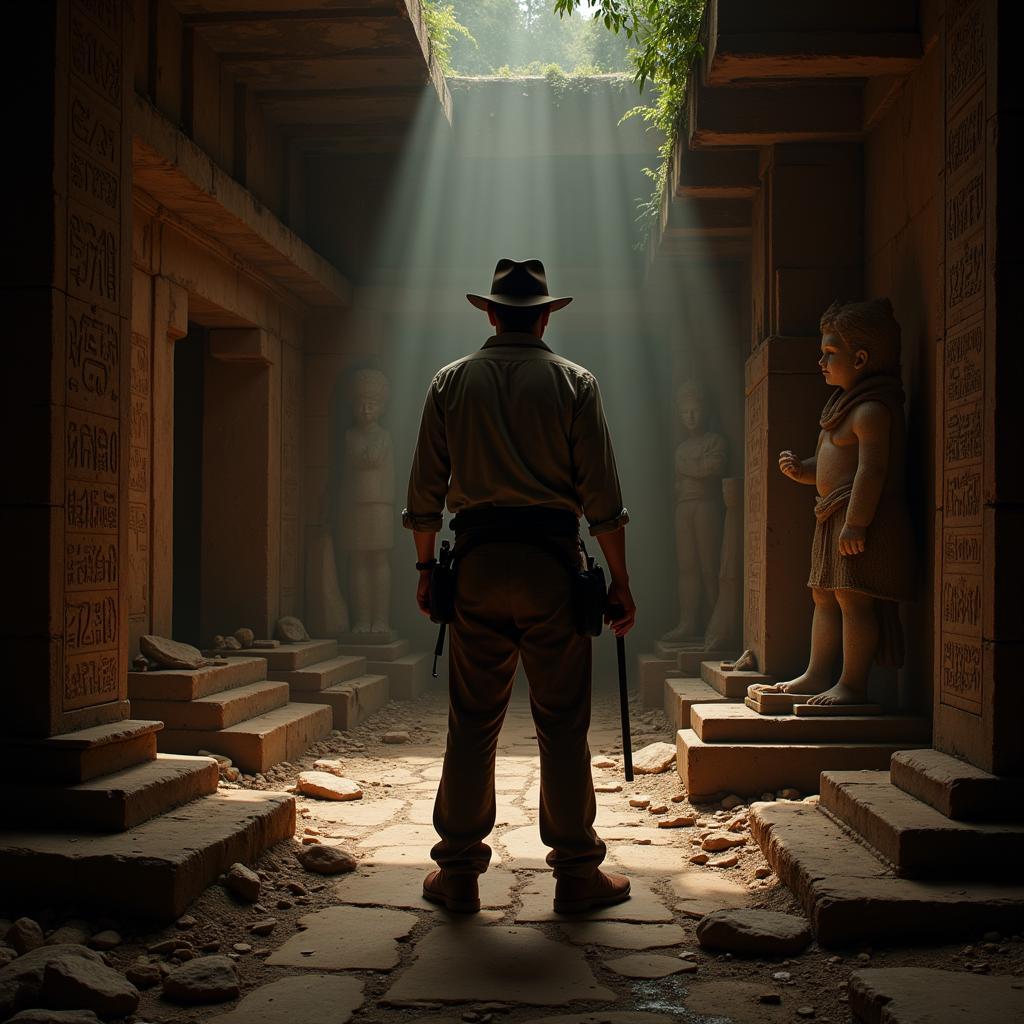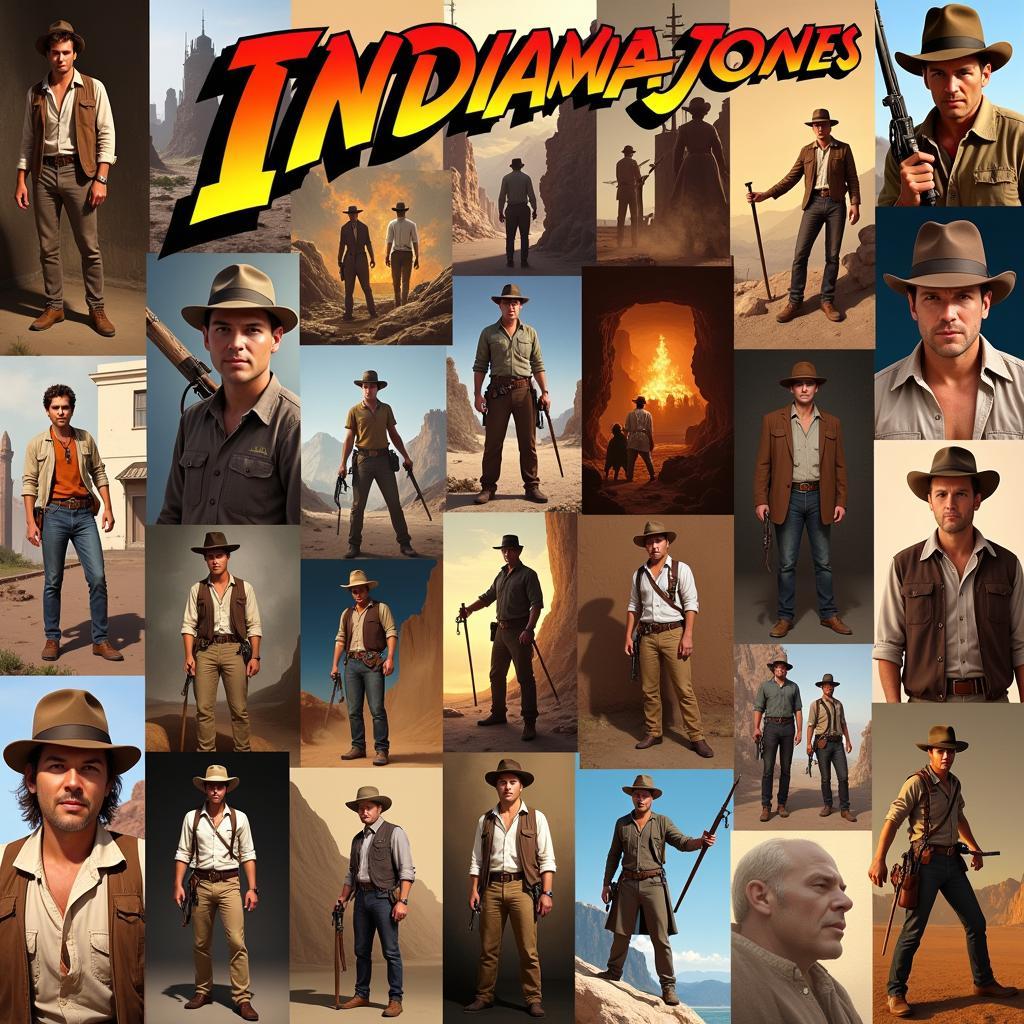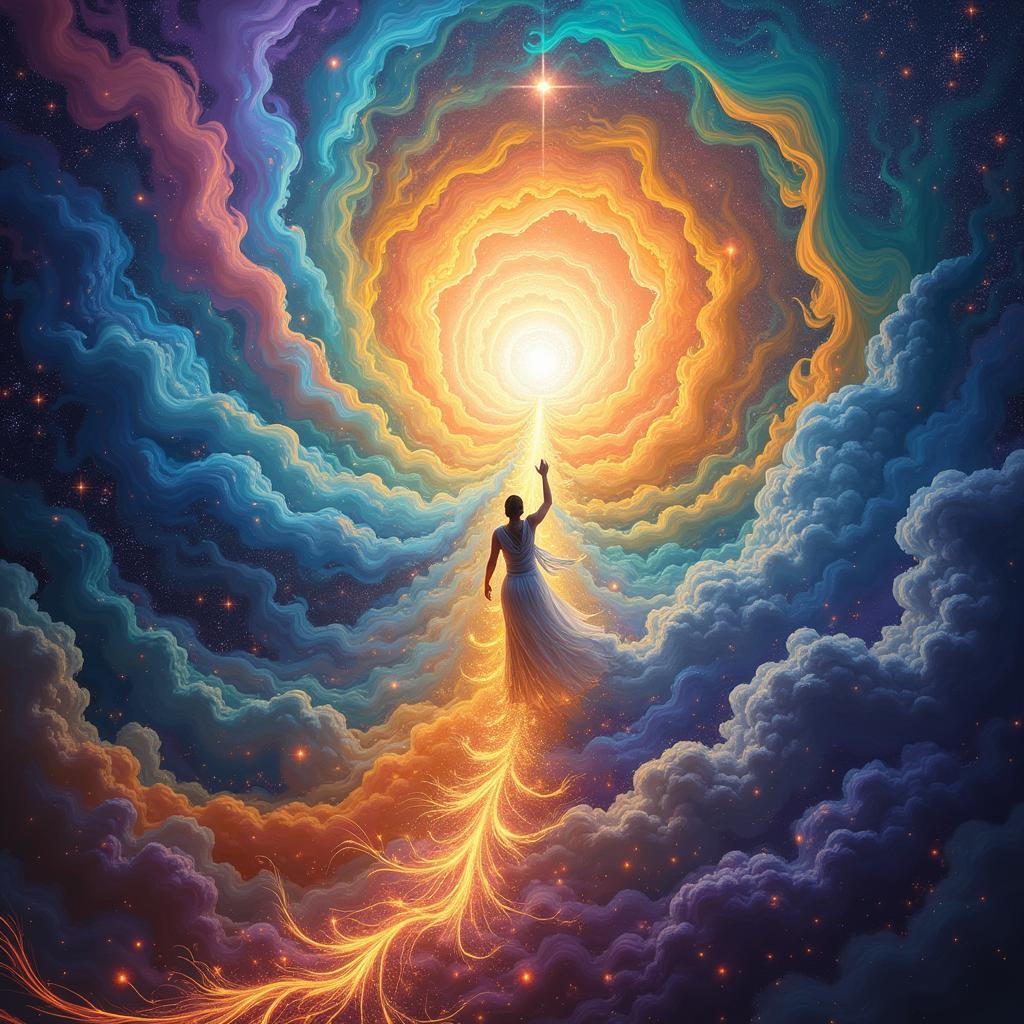Unearthing Indiana Jones Art: The Aesthetics of Adventure
Indiana Jones Art encapsulates the thrilling world of archaeology, adventure, and ancient mysteries. From the iconic whip and fedora to hidden temples and perilous traps, the visual language of the Indiana Jones franchise has captivated audiences for decades. This article delves into the artistic influences, symbolism, and enduring legacy of Indiana Jones art, exploring how it has shaped our perception of adventure and inspired countless artists.
The Visual Vocabulary of Adventure: Deconstructing Indiana Jones Art
The Indiana Jones films are a visual feast, drawing inspiration from classic adventure serials, pulp magazines, and real-world archaeological discoveries. The costume design, set pieces, and even the typography all contribute to a cohesive aesthetic that evokes a sense of timeless adventure. The color palettes, often featuring earthy tones and vibrant pops of color, further enhance the exotic locales and thrilling action sequences. Think of the dusty, sun-drenched landscapes of the desert or the vibrant greens of the jungle, all meticulously crafted to immerse the viewer in Indy’s world. This meticulous attention to detail is a hallmark of Indiana Jones art, creating a believable and captivating world.
The Influence of Classic Adventure: Pulp Fiction and Serial Films
The visual style of Indiana Jones art owes a significant debt to the pulp magazines and serial films of the early 20th century. These thrilling tales of daring explorers and lost civilizations provided a rich source of inspiration for the filmmakers. The bold compositions, dramatic lighting, and exaggerated action of these early forms of entertainment are echoed in the dynamic visuals of the Indiana Jones films. From the cliffhanger endings of the serials to the vivid cover art of pulp magazines, these influences are woven into the fabric of Indiana Jones art. The sense of danger, excitement, and exoticism that permeated these early adventures is perfectly captured in Indy’s world.
Symbolism and Meaning in Indiana Jones Art
Beyond the surface level of adventure, Indiana Jones art is rich in symbolism. The Ark of the Covenant, the Sankara Stones, and the Holy Grail are not just MacGuffins; they represent powerful objects of faith and legend. The recurring motif of snakes, Indy’s famous phobia, symbolizes danger and the unknown. Even the whip, Indy’s signature weapon, can be interpreted as a symbol of his resourcefulness and control. These symbols add layers of meaning to the narrative, enriching the viewing experience and inviting deeper interpretation.
 Indiana Jones and Archaeological Discoveries: Ancient Temples and Artifacts
Indiana Jones and Archaeological Discoveries: Ancient Temples and Artifacts
What Makes Indiana Jones Art so Appealing? Exploring its Enduring Legacy
Why does Indiana Jones art continue to resonate with audiences decades later? Part of its appeal lies in the timeless nature of the adventure narrative. The themes of exploration, discovery, and heroism are universal and enduring. The films also tap into our fascination with history and archaeology, presenting a romanticized vision of these fields. The blend of action, humor, and heart, combined with the stunning visuals, creates a truly captivating experience that transcends generations.
The Future of Indiana Jones Art: Inspiring New Generations
Indiana Jones art continues to inspire artists and filmmakers today. Its influence can be seen in video games, comic books, and other forms of media. The enduring appeal of the franchise suggests that the spirit of adventure and the visual language of Indiana Jones art will continue to captivate audiences for years to come. The franchise’s impact on popular culture is undeniable, and its artistic legacy continues to evolve.
 Indiana Jones Inspired Fan Art: Diverse Interpretations and Styles
Indiana Jones Inspired Fan Art: Diverse Interpretations and Styles
In conclusion, Indiana Jones art is more than just a collection of images; it’s a visual language that speaks to our deepest desires for adventure, discovery, and heroism. From the iconic imagery to the subtle symbolism, Indiana Jones art continues to inspire and captivate audiences, solidifying its place as a cornerstone of adventure cinema.
FAQ
- What are the main artistic influences on Indiana Jones? Classic adventure serials, pulp magazines, and real-world archaeology.
- What is the significance of the whip in Indiana Jones art? It symbolizes resourcefulness and control.
- What are some examples of symbolism in Indiana Jones? Snakes representing danger, the Ark representing faith.
- Why is Indiana Jones art so enduring? It taps into timeless themes of adventure and discovery.
- How does Indiana Jones art continue to inspire? It influences video games, comics, and other media.
- What is the primary color palette used in Indiana Jones films? Earthy tones with vibrant pops of color.
- What are some key elements of Indiana Jones’ costume? Fedora, leather jacket, and whip.
Do you have other questions about Indiana Jones and the art that brings his adventures to life? Explore more articles on our website related to film aesthetics, costume design, and the influence of pulp fiction.
Need help navigating the world of Online Art workshops? Contact us! Phone: 02462573573, Email: danteum@gmail.com or visit us at Savico Megamall, 7-9 Đ. Nguyễn Văn Linh, Gia Thụy, Long Biên, Hà Nội 10000, Việt Nam. We have a 24/7 customer service team.




